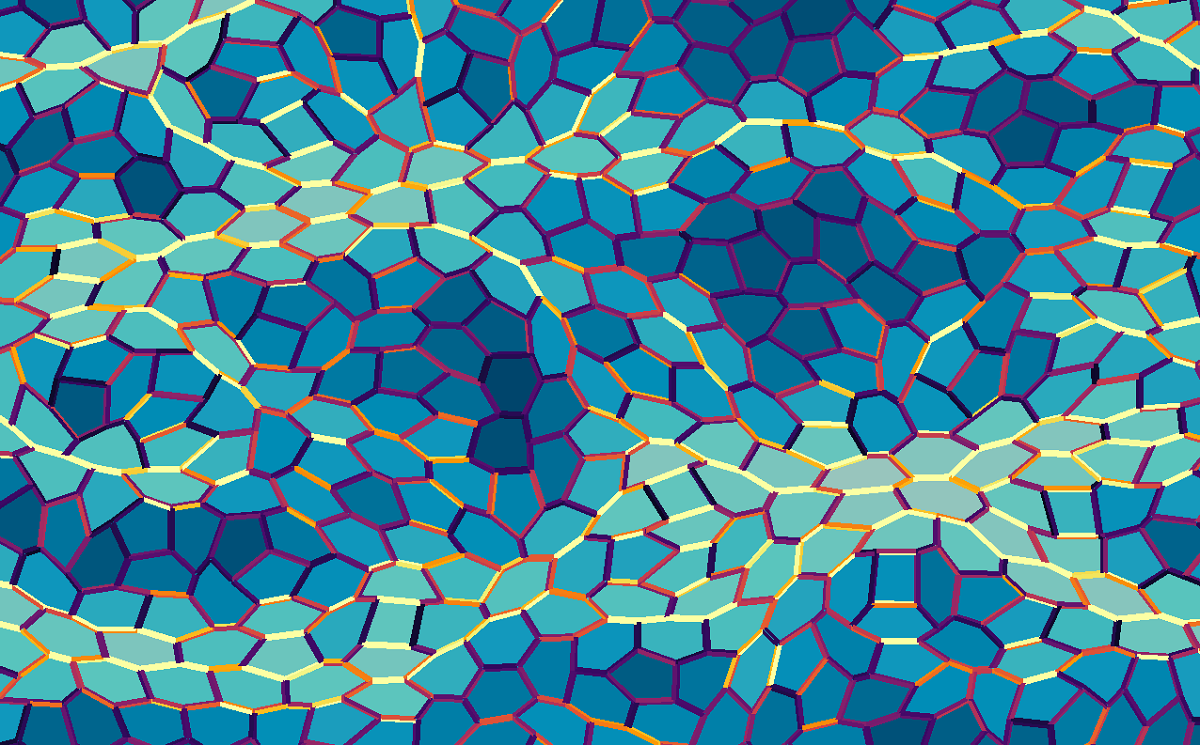
Physics in the picture: cancer cells as an explosion of fireworks
When you think of physics, do you think only of complicated formulas? You’re not the only one. Therefore, every year, the Leiden Insitute of Physics organises the LION Image Award to show another side of physics: beautiful images about intriguing science. The winner of the 2022 photo competition captured his research about cancer metastasis in an image that is reminiscent of fireworks.
The competition challenges physics students and researchers to look at their work through a different lens and look for art. There were 14 submissions from students to professors and from all physics disciplines. The three winners were chosen by a jury consisting of the FWN image editors, the LION science communicator and — dictated by tradition — one of the LION secretaries. The jury members each picked their top 3 and added up the scores to decide the winners, who were announced on January 24. There is only one rule: aesthetics counts more than scientific interest.
These are the winners of the 2022 competition:
-
First place: Spheroid Force Sensing by Rick Rodrigues de Mercado
-
Second place: Colourful Organic Crystals by Robert Smit
-
Third place: Merry Silicon Christmas by Guido Stam
Understanding cancer metastasis
The image of Rodrigues de Mercado shows a biophysics experiment. The PhD candidate explains: ‘During cancer metastasis, cells dissociate from the primary tumour and collectively invade the surrounding tissue. We use so-called spheroids (depicted in white) that mimic real tumours to research this process. The image shows the migration of highly metastatic skin cancer cells.’

The sample was created in close collaboration with Klara Beslmüller from LACDR. The blue and yellow features are different parts of the cells in ‘fingers’ that collectively extend outward from the spheroid. Rodrigues de Mercado adds: ‘The cool physics behind the image is actually focused in the red micro-spheres. These are sensors that measure the force the cells exert on their environment. This gives us a better understanding of mechanisms that are involved in cancer metastasis.’
The jury praises the high level of detail and energetic appearance of the image: ‘This photo radiates pure dynamics and action! There seems to be an explosion that causes rips in the black background.’ Another jury member noted: ‘I see fireworks and exploding stars. That’s probably not what this is, but I love it.’ Rodrigues de Mercado wins 100 euros and his image will be framed at the institute.
Colourful crystals revealed with phone and microscrope
Smit explains about his image: ‘Surprised by the beautiful colouring of the crystal, I wanted to capture it. So I took a picture with my phone’s camera through the microscope eyepiece. The colours are caused by a phenomenon called birefringence. Birefringence means that light rays travelling through the material are refracted differently by the light's polarisation. With this experiment, we could obtain information about the microscopic structure of the crystal.’ The jury notes: ‘The dazzling colours in this photo come together wonderfully and keep drawing the eye. The composition — with the larger surfaces and the smaller, scattered ones — makes me want to know the story behind this picture.’

Optical illusion
Stam’s image shows the surface of a silicon sample through a low-energy electron microscope. Stam says: ‘The false colouration is actually very misleading. The red area looks notably different, but this isn’t actually the case and is caused by the chosen colour scale. However, it does make for an aesthetically pleasing image.’ The jury agrees with this: ‘What a work of art! There are depths, patterns and lines. It’s an optical illusion that I could look at for hours. If you ask me the definition of art and science, it’s this image. It triggers my imagination.’
Check out the other submitted images here!
-

Amin Moradi - Splash -

Anna Bakker - Protein condensates associated with neurodegeneration viewed in a confocal microscope -

Arash Tebyani - Molecular Layer Growth -

Evert van Nieuwenburg - HamiltoniArt -

Jacqueline Labra Muñoz - 10^-9 Xmas -

Julia Eckert - May the force be with you -

Julio Melio - he Experiment -

Marieke Visscher - Droplets of Silver -

Silke Henkes - Myosin cables crossing a simulated cell sheet -

Tom van der Reep - Single Photon Human Vision
